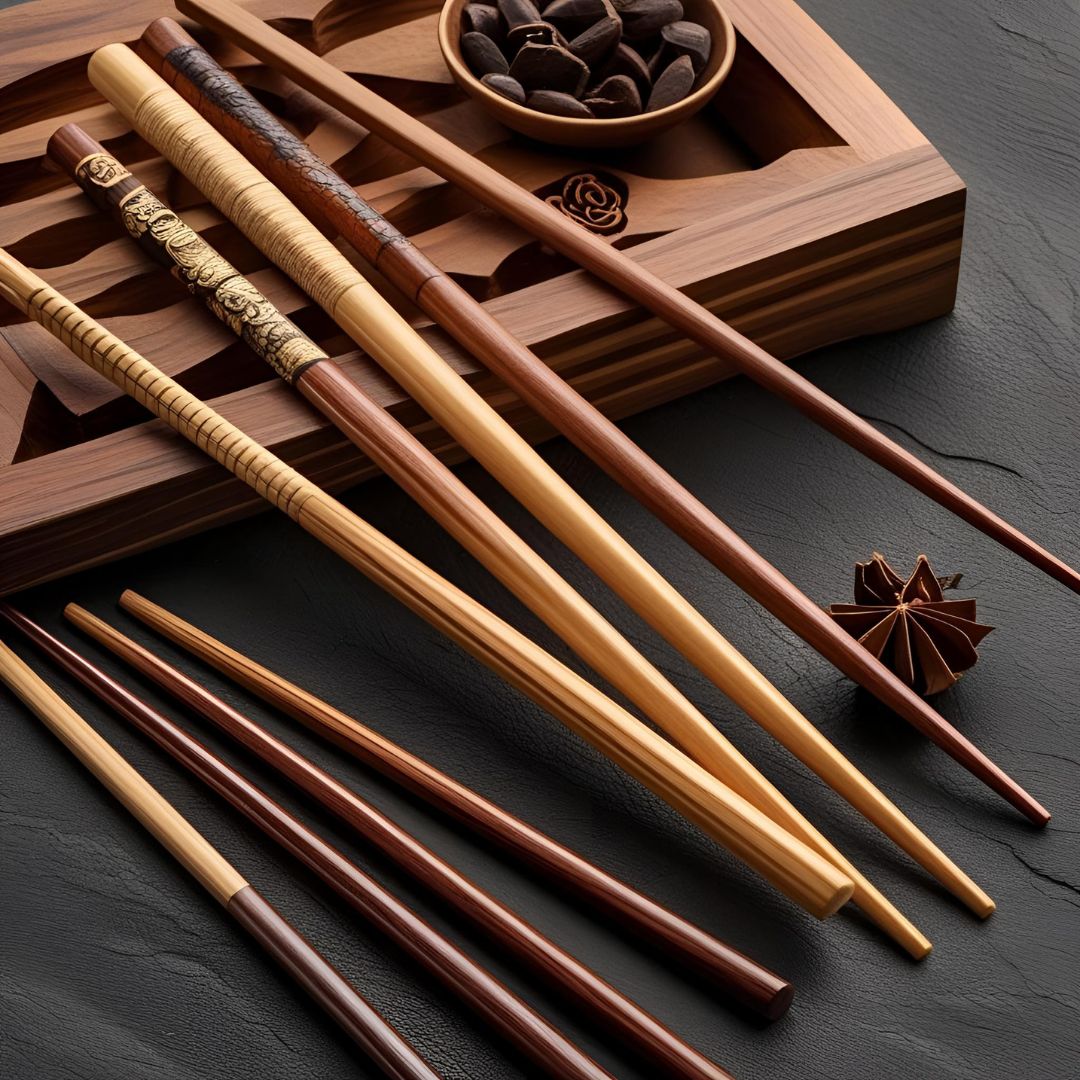Chopsticks have been a staple of Asian dining culture for thousands of years, and while modern versions can be made from plastic, metal, or bamboo, wooden chopsticks remain the most popular choice worldwide. But not all wood is created equal—some are prized for their elegance, others for durability or affordability.
In this post, we’ll explore the most common types of wood used to make chopsticks, their unique qualities, and which one might be the best fit for your next meal or gift set.
🌿 1. Bamboo – Eco-Friendly & Lightweight
Technically a grass, but often grouped with wood, bamboo is the most widely used material for chopsticks.
-
✅ Pros: Sustainable, fast-growing, biodegradable, affordable
-
❌ Cons: Can split over time, absorbs moisture if not sealed
-
Best for: Disposable chopsticks, eco-conscious products, simple household use
Bamboo chopsticks are ideal for everyday dining and environmentally friendly packaging, making them a popular option in restaurants and takeout services.

🌳 2. Birch Wood – Smooth & Disposable
Birch is often used for disposable wooden chopsticks due to its light color, softness, and ease of manufacturing.
-
✅ Pros: Lightweight, smooth texture, splinter-resistant
-
❌ Cons: Not reusable, less durable
-
Best for: Restaurants, fast food, single-use settings
If you've used disposable chopsticks in a sushi bar, there's a good chance they were made of birch wood.

🌲 3. Sandalwood – Aromatic & Luxurious
Sandalwood chopsticks are considered premium due to their natural fragrance and beautiful reddish-brown tone.
-
✅ Pros: Durable, elegant grain, pleasant scent
-
❌ Cons: More expensive, heavier
-
Best for: Gifts, ceremonial use, high-end dining
Sandalwood is often used in luxury chopstick sets and makes a sophisticated gift for weddings or anniversaries.
🌲 4. Rosewood – Dense & Decorative
Rosewood is a strong, richly colored hardwood that lends a high-end, traditional feel.
-
✅ Pros: Heavy, durable, dark and polished look
-
❌ Cons: Heavier in hand, can be expensive
-
Best for: Reusable household chopsticks, heirloom sets
Rosewood chopsticks often feature carved or inlaid designs and are perfect for those who want something elegant yet functional.
🌰 5. Boxwood – Traditional & Smooth
Boxwood (黄杨木) is a fine-grained wood traditionally used in Chinese craftsmanship.
-
✅ Pros: Smooth surface, high density, traditional value
-
❌ Cons: Can warp with improper care
-
Best for: Traditional Chinese-style chopsticks, tea ceremonies
Its fine grain allows for detailed carving, making it suitable for artistic or collectible sets.

🌴 6. Ironwood / Ebony Wood – Rare & Premium
These dense tropical hardwoods are used in some of the most luxurious chopstick sets.
-
✅ Pros: Incredibly durable, striking appearance, heavy feel
-
❌ Cons: Very expensive, harder to source ethically
-
Best for: Elite gift sets, collectors, display pieces
These woods are ideal for customers looking for elegance, craftsmanship, and rarity.

🧼 Care Tips for Wooden Chopsticks
-
Hand wash only – Avoid dishwashers to prevent cracking or warping
-
Dry immediately – Don’t let wooden chopsticks soak in water
-
Oil occasionally – Use food-safe mineral oil to maintain shine and durability
-
Store properly – Keep in a dry place or use a chopstick holder
🎁 Choosing the Right Wood for Your Needs
| Wood Type | Best For | Vibe/Style |
|---|---|---|
| Bamboo | Eco & Everyday Use | Simple, natural |
| Birch | Disposable Dining | Clean, minimal |
| Sandalwood | Gifting & Luxury | Fragrant, elegant |
| Rosewood | Heirloom Quality | Classic, bold |
| Boxwood | Traditional Ceremonies | Smooth, refined |
| Ebony/Ironwood | Premium Collectibles | Rich, exotic |
Final Thoughts
Whether you're choosing chopsticks for daily use or a special gift set, the type of wood used plays a big role in aesthetics, feel, and durability. From lightweight bamboo to luxurious sandalwood, each material brings its own charm to the dining experience.
So next time you're holding a pair of chopsticks, take a moment to appreciate the craftsmanship—and the wood behind the beauty.



